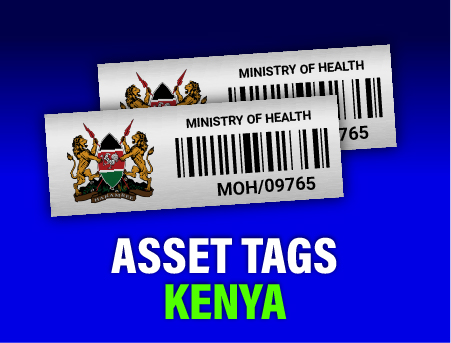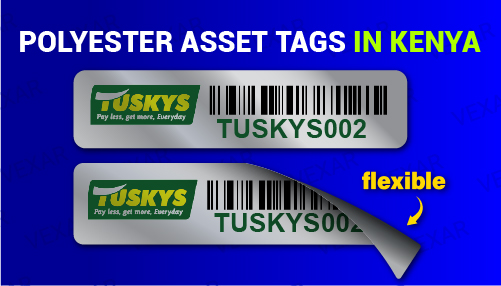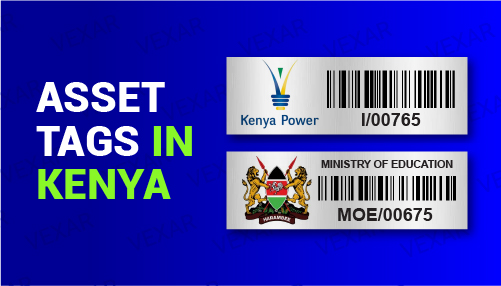Barcode Asset Tags Nairobi – Streamlining Inventory Management and Asset Tracking
Barcode Asset Tags Nairobi are a cornerstone of efficient inventory control and asset management for organisations of all sizes — from small Nairobi offices to large distribution centres and public institutions. A well-designed barcode tagging programme speeds audits, reduces human error, and creates a reliable digital trail that supports procurement, maintenance, and compliance.
What Are Barcode Asset Tags?
Barcode asset tags are durable labels printed with machine-readable barcodes (1D or 2D) and applied to physical assets. When scanned with a handheld reader or smartphone, each barcode links to a unique record in your asset register: item details, purchase date, warranty, location, and maintenance history. In Nairobi’s fast-moving business environment, these tags turn manual paperwork into instant, searchable data — saving time and reducing costly mistakes.
Why Barcode Asset Tags Matter in Nairobi
In Nairobi, organisations face challenges like frequent audits, multi-site operations, and the need to track technology and equipment across departments. Barcode Asset Tags Nairobi enable quick verifications during audits, simplify stocktakes, and allow field teams to record movements accurately. Public agencies, schools, and private companies that implement barcode systems report faster inventories and tighter control over assets.
Types of Barcode Tags and Symbologies
Choosing the right barcode symbology is important. Common types include:
- Code 39 / Code 128 (1D): Widely used for asset tags due to simplicity and compactness.
- EAN / UPC (1D): Common in retail and supply-chain contexts.
- DataMatrix / QR Code (2D): Store more information and allow smaller physical footprints — useful for electronics and small items.
For guidance on global identification best practices, many organisations refer to GS1 and ISO barcode standards, which help ensure compatibility across systems and regions.
Materials & Durability: What Works Best in Nairobi
Barcode tags must survive the environment in which they are used. Typical material options include:
- Aluminium tags: Excellent for outdoor, industrial, and high-wear environments.
- Polyester labels: Cost-effective, flexible, and ideal for indoor equipment.
- Tamper-evident and acetone-activated tags: For assets that require permanent, tamper-proof identification.
Vexar Solutions provides a range of printing methods — laser etching, anodized printing, and UV printing — to ensure barcodes remain scannable even after years of handling. See our services for aluminium barcode tags and polyester barcode labels for practical options.
How Barcode Asset Tags Improve Inventory Management
Barcode Asset Tags Nairobi simplify several day-to-day operations:
- Faster audits: Scanning tags during audits reduces time and human error.
- Accurate location tracking: Scan-on-move updates the asset’s location instantly in your system.
- Maintenance history: Link barcode IDs to service logs and schedules for proactive upkeep.
- Depreciation & reporting: Generate accurate financial reports for fixed assets and insurance.
Organisations using barcode tags alongside digital systems report significant reductions in asset loss and time spent on reconciliations.
Integration with Asset Management Software
Barcodes are most powerful when integrated with an asset management platform. Linking every barcode to your asset register enables automatic updates and consolidated reporting. Vexar Solutions supports integration with popular systems — from lightweight databases to full-featured platforms like Snipe-IT and custom ERP modules. Learn more about our software integration options on the Asset Management Software page.
Designing a Barcode Tagging Project for Nairobi Organisations
Successful barcode programmes follow a simple roadmap:
- Asset classification: Group assets by type, location, and custodian.
- Tag selection: Choose the right material and symbology for each asset class.
- Data mapping: Define the fields to be stored in your asset register (serials, model, location, warranty).
- Printing & encoding: Print barcodes with sequential or variable data and verify scannability.
- Deployment & training: Tag assets, update the register, and train staff on scanning and procedures.
For professional deployment, consider partnering with a specialist. Our Fixed Asset Tagging Services include tagging, mapping, and full handover documentation.
Common Pitfalls and How to Avoid Them
Even simple barcode projects can stumble without proper planning. Common mistakes include:
- Poor tag placement that makes scanning difficult
- Using low-contrast prints that fail on mobile scanners
- Not linking barcodes to a centralised database
- Failing to standardise tag formats across locations
Avoid these by standardising placement, using high-contrast printing, and maintaining a single source of truth for your asset data. Training staff on scanning workflows is often the most cost-effective improvement an organisation can make.
Real-World Examples from Nairobi
A mid-sized Nairobi school used barcode asset tags to tag 1,200 ICT devices and saw audit time fall by over 70%. Similarly, a logistics company in Westlands implemented aluminium barcode tags across its fleet and warehouses, reducing misplaced equipment and streamlining maintenance schedules. These practical wins show how barcode tagging translates directly into saved time and lower replacement costs.
Choosing a Provider: What to Look For
Select a supplier who offers end-to-end support: design, durable printing, variable data encoding, on-site tagging, and integration with your asset register. Vexar Solutions provides customised printing options and professional tagging services, ensuring every barcode tag is correctly encoded and linked to your system. Explore our Custom Asset Tags Printing page for sample materials and finishes.
Standards and Best Practices
Adopt recognised standards for longevity and interoperability. GS1 offers global identification standards and best practices for barcoding, while ISO provides technical specifications that help maintain scan reliability and data integrity. Useful references include GS1 and the ISO standards catalogue for barcode technologies.
Conclusion: Make Barcode Asset Tags Work for You in Nairobi
Barcode Asset Tags Nairobi transform asset management from a manual chore into an automated, auditable process. With the right materials, symbology, and software integration, barcodes deliver measurable improvements in inventory accuracy, audit speed, and asset security. If you’re ready to roll out a tagging programme across one site or multiple branches, contact Vexar Solutions to get a tailored plan and quotation.






